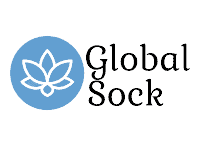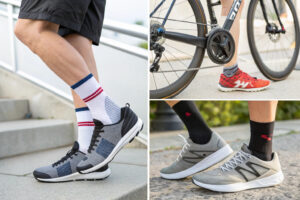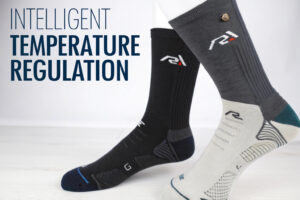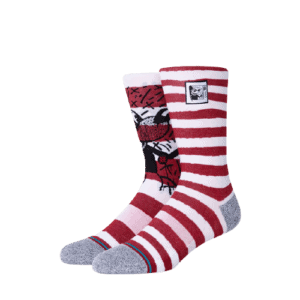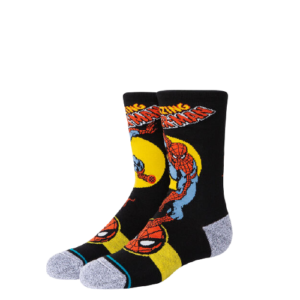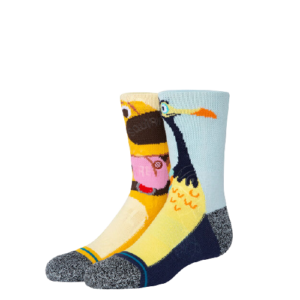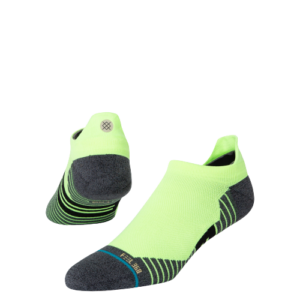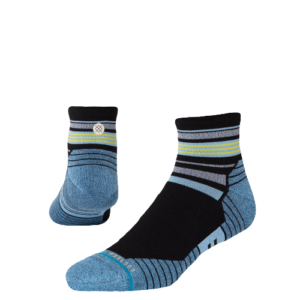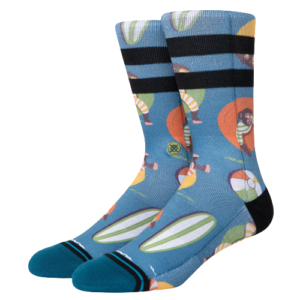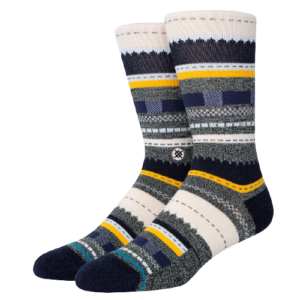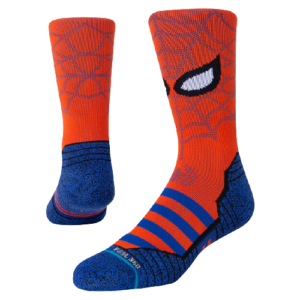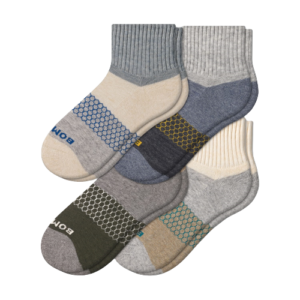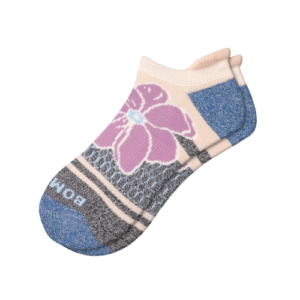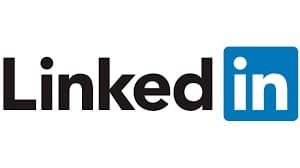For sock buyers and importers, finding a reliable supplier for inclusive products like socks with Braille labels can be challenging. You need a manufacturer that understands both the technical aspects of Braille integration and the importance of creating a truly accessible product. This isn't just about adding texture; it's about delivering independence and dignity to visually impaired users. The process involves specialized knowledge, from selecting the right fabrics to ensuring the Braille labels are durable and accurate. Many suppliers lack the experience or the commitment to get this right, leading to products that fail in their purpose.
Sourcing socks with Braille labels requires partnering with a manufacturer that has proven expertise in accessible design and functional textiles. This includes capabilities in precise Braille embroidery or printing, the use of soft yet durable yarns, and rigorous quality control to ensure the labels remain legible after repeated washing. As a leading socks manufacturer in Asia, we have developed specialized processes to produce these inclusive products, combining our technical knowledge with a genuine understanding of the user's needs.
Let's explore the key steps and considerations for successfully sourcing high-quality, compliant socks with Braille labels for the visually impaired community.
How can you ensure Braille label durability on socks?
The longevity of Braille labels is a primary concern. If the labels wear down quickly, they become useless, defeating the entire purpose. Ensuring durability starts with the manufacturing technique and the choice of materials. Not all methods are created equal, and the wrong choice can lead to labels that peel, fade, or become uncomfortably hard.
A common and effective method is precision embroidery. Using a soft, synthetic yarn like polyester, the Braille is stitched directly into the sock's cuff. This creates a permanent, tactile dot that can withstand frequent washing and wearing. The key is the stitch density and the thread quality, which prevent the dots from flattening over time. Alternatively, heat-transfer printing with a raised, rubber-like polymer can be used for a smoother feel, but it must be tested for crack resistance and wash fastness.

What manufacturing techniques prevent Braille from fading?
The technique chosen directly impacts the Braille's resistance to fading and wear. Embroidery is often the superior choice for long-term durability. We use high-density stitching with UV-resistant polyester thread, which maintains its shape and texture through dozens of wash cycles. For a flatter profile, silicone printing is an option, but it requires a specific catalyst to bond with the fabric securely. We conduct thorough testing in our CNAS-certified lab to simulate real-world conditions, including colorfastness and abrasion tests, ensuring the Braille remains legible for the product's entire lifespan. It's not just about applying the Braille; it's about engineering it to last.
Which fabric blends best support durable Braille labels?
The base fabric of the sock is just as important as the Braille application method. A smooth, stable fabric provides the best foundation. Combed cotton blends with a high percentage of nylon and spandex are ideal. The cotton offers softness and comfort, while the synthetic fibers provide the tensile strength needed to hold the embroidered stitches without puckering or distorting. For performance socks, a moisture-wicking blend like our Bamboo Socks or a Merino Wool Socks blend works well, as they maintain their structure. We avoid loosely knit fabrics that can shift during the embroidery process, leading to misaligned or inconsistent Braille dots.
What are the key compliance standards for Braille clothing?
When producing adaptive clothing like Braille-labeled socks, compliance is not just about quality—it's about safety and accessibility. Adhering to recognized standards protects your brand and, more importantly, ensures the product is reliable for the end-user. Different markets have different regulations, and being aware of these is crucial for successful import and sales.
The most relevant standards involve textile safety and labeling accuracy. In the European Union, the OEKO-TEX Standard 100 certification is vital, as it verifies the product is free from harmful substances. For the North American market, CPSIA (Consumer Product Safety Improvement Act) compliance is key. While there isn't a single global standard for Braille itself, the Americans with Disabilities Act (ADA) spirit of effective communication guides much of the product development. Furthermore, the physical application of the Braille must not compromise the sock's safety, ensuring no parts can detach and become a choking hazard.

Which international certifications should you look for?
Your supplier should possess certifications that validate their commitment to safety and quality. The OEKO-TEX Standard 100 is arguably the most important for textiles, certifying that every component, from thread to dye, is harmless to human health. For factories with strong quality management systems, an ISO 9001 certification is a good indicator. We also recommend partners who invest in eco-certifications like Global Recycled Standard (GRS) for products using recycled materials, aligning with the values of many modern consumers. These certifications are not just pieces of paper; they are proof of a factory's dedication to responsible manufacturing and product integrity.
How to verify Braille accuracy and consistency?
Mistakes in Braille are more than just quality defects; they render the product inaccessible. Verification is a two-step process: digital and physical. First, the Braille text is double-checked using specialized software before the embroidery or printing program is created. Second, and most critically, every production batch must include physical inspection by a sighted reader using a Braille chart or, ideally, by a visually impaired consultant. In our facility, we implement a QR code tracking system that links back to the specific production run and Braille file used, creating an auditable trail from the factory floor to the final packaged product, ensuring total quality control.
How to find a reliable Braille socks manufacturer?
Finding a partner who can deliver on both quality and ethical production is the cornerstone of successful sourcing. The right manufacturer will have experience in adaptive products and a transparent supply chain. You need to look beyond the price and assess their capabilities, certifications, and company culture.
Start your search on B2B platforms like Alibaba, but use advanced filters to identify suppliers with verified ISO 9001 certifications and those who explicitly mention "custom technical textiles" or "adaptive clothing." Attending international trade shows is even more effective, as it allows you to see and feel product samples and have face-to-face conversations. When you shortlist potential partners, ask direct questions about their experience with Braille labels, request proof of past work, and inquire about their quality control process from fabric sourcing to final inspection.

What questions to ask a potential socks supplier?
Due diligence is critical. Go beyond generic questions and ask specifics about Braille production. Key questions include: "Can you provide a step-by-step breakdown of your Braille application process?", "What is your maximum tolerance for Braille dot height variation?", and "How do you test for wash fastness of the Braille labels?". You should also ask about their logistics and payment methods to ensure a smooth transaction. Inquire about their packaging options, as these socks may require specific, informative labeling for end-users. A reliable supplier will have clear, confident answers and be willing to provide a comprehensive tech pack for your review.
Why is factory audit crucial for specialized products?
For a product as nuanced as Braille socks, a factory audit—either virtual or in-person—is non-negotiable. It allows you to verify their claimed capabilities. Look for a clean, organized production floor and modern, computerized embroidery machines. Check if they have an in-house testing lab for colorfastness and shrinkage. An audit also reveals their commitment to social compliance, ensuring ethical labor practices. We open our doors to clients because we are proud of our operational integrity, from our agile R&D team to our final inspection stations. This transparency builds the trust necessary for a long-term partnership.
What is the typical cost and timeline for Braille socks?
Understanding the investment and production schedule is essential for planning your inventory and marketing. The cost and timeline for Braille socks are generally higher than for standard socks due to the additional specialized processes involved. However, with an efficient supplier, this can be managed effectively without compromising on speed to market.
The cost is influenced by order quantity, sock complexity, and the Braille method. Embroidery typically has a higher initial setup cost but becomes more economical for larger runs. A general price range for custom socks with Braille can be 15-30% higher than standard equivalents. The timeline also extends slightly. While we offer a one-week sample development, the bulk production time for a Braille order might be 5-7 weeks, including time for multiple quality checks at the Braille application stage. This ensures you receive a product that meets the highest standards of quality control.

How does order quantity affect the unit price?
Like most manufacturing, economies of scale apply significantly. The setup cost for the Braille embroidery program is fixed. Spreading this cost over 1,000 pairs versus 10,000 pairs makes a substantial difference in the unit price. For smaller businesses, we often recommend starting with a small-batch customization order to test the market. For larger buyers targeting big retailers like Walmart, a larger order brings the unit cost down dramatically. We work transparently with our clients to find the most cost-effective order quantity for their needs, ensuring a good balance between cost, inventory risk, and market demand.
What factors influence the production lead time?
Several factors can impact the production schedule. The most significant is the approval process for the Braille samples, which requires careful review. The availability of specialized yarns, like organic cotton or recycled polyester, can also affect the timeline. Furthermore, the complexity of the sock itself—such as incorporating compression features or intricate patterns—adds to the production time. Finally, global logistics and shipping schedules, especially for sea freight to the U.S., must be factored in. We mitigate these risks through our agile supply chain and strong relationships with local dyeing and weaving partners, providing you with a reliable and realistic timeline.
Conclusion
Sourcing socks with Braille labels is a meaningful venture that combines commercial opportunity with social impact. It requires a focused approach on durability, compliance, and finding the right manufacturing partner. By prioritizing precise Braille application, adhering to international safety standards, and conducting thorough supplier due diligence, you can confidently bring a high-quality, accessible product to market. This not only meets a practical need but also demonstrates a commitment to inclusivity, strengthening your brand's value and reach.
If you are looking for a reliable partner to produce high-quality socks, including specialized lines with Braille labels, we invite you to contact us. Our team is ready to assist you with development, sampling, and large-scale production. For a personalized discussion about your clothing order needs, please reach out to our Business Director, Elaine, at elaine@fumaoclothing.com. Let's collaborate to create products that make a difference.
